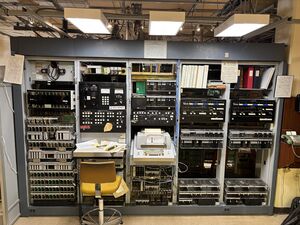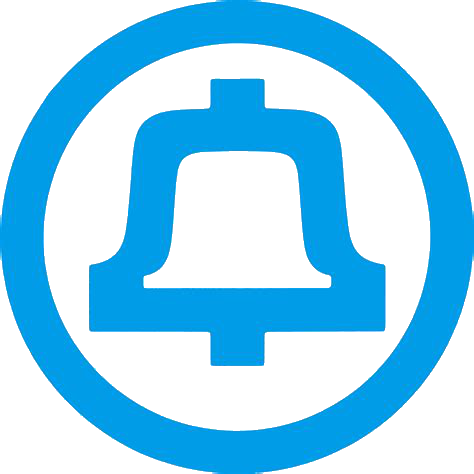CMS:Number Three Electronic Switching System


The Number Three Electronic Switching System (3ESS) is an electronic switching system on the second floor of the Connections Museum. It was originally installed in 1978 as a Community Dial Office (CDO) in the village of Crosby, Washington. It contains a custom tape drive emulator created by volunteers at the museum after the original tapes began to fail.
History
In its early years at the museum, the 3ESS was cared for by volunteer Rich Barger and Astrid Smith. It was left running 24/7 at that time, as the tapes had deteriorated beyond repair, and the capstan in the tape drives had turned into goo. Despite installing new capstans in the drives, the tapes themselves were in such poor condition that reading them in the drives was impossible--any attempt to do so resulted in broken or hopelessly tangled tape.
In roughly 2012, the computers froze for unknown reasons, necessitating a reboot of the system. After the reboot, the generic (the ESS's main program) failed to load from the tape. After some troubleshooting, the machine was powered down indefinitely.
Restoration
In 2019, volunteers began an effort to restore the machine to working operation. This was a significant undertaking, which required disassembling a damaged tape, and recording the data as an audio track using a custom head block mounted to a reel-to-reel tape machine. This was completed by volunteer Dave Dintenfass at his recording studio, Full Track Productions.
After the audio was captured from the tape, volunteers Astrid Smith, Andrew Sentman, Matt Mullins, Colin Slater, and Sarah Autumn worked to turn the audio waveform into a set of binary files that could (in theory) be transferred into the 3ESS's central control. Colin created a "tape emulator" board that replaced tape machine 0 in the switch, and read the binary data from a microSD card.
Once that was mounted in the machine, a year of debugging took place, where Colin and æstrid worked to reverse-engineer the tape commands and understand what the system needed in order to boot. This proved to be a very complex task, as some of the required documentation was missing entirely. This difficulty was further compounded by not having any available debugging tools other than a logic analyzer and an oscilloscope.
In 2021, the machine booted successfully for the first time in 9 years. It is now demonstrated to visitors weekly, on Sundays.
